“You can't be anxious about tomorrow while being fully present in today.”
Anxiety has become the background noise of modern life. And also cause kidney stones.
For many, it’s a slow drizzle that fogs thinking, blurs joy, and creates a constant undercurrent of worry.
It shows up in overthinking, in the heaviness of the chest, in racing thoughts at 2 a.m., and in a persistent feeling that something is about to go wrong even when everything seems fine.
But what if the antidote isn’t in fighting anxiety head-on and making you consciously focused on the moment?
Continue reading to discover cutting-edge techniques that will boost your clarity and focus.
What is consciously focused on the moment
Being consciously focused on the moment means giving your full attention to the here and now, not the past, not the future, just the present. It’s the practice of noticing what you are doing, feeling, or experiencing without judgment or distraction.
Whether you are eating, walking, working, or simply breathing, you are being present in that activity. This kind of mindful awareness helps reduce anxiety, improve clarity, and strengthen emotional resilience.
Instead of reacting to thoughts or stress automatically, you create space to respond calmly. It’s a simple yet powerful shift that brings more peace, intention, and balance into everyday life.
How to be consciously focused on the moment
1. Engage Your Senses Fully
The quickest way to anchor yourself in the moment is to activate your five senses. neuroVIZR does this through targeted light and sound stimulation. You can do it naturally by pausing to notice:
-
Sight – Notice what’s around you: colors, light, shadows, or movement. Let your eyes rest on something natural or calming.
-
Sound – Listen to the ambient noise. Whether it's distant traffic, a ticking clock, or the breeze, hearing without judgment helps anchor you.
-
Touch – Feel the texture of your clothes, your chair, the air on your skin, or the weight of your body.
-
Smell and Taste – Breathe in deeply and notice any scent. Take a sip or bite of something and taste it.
Engaging your senses pulls your awareness from your thoughts into your physical reality. It’s like pressing reset on your attention.
The brain responds powerfully to sensory awareness. When you feel overwhelmed or scattered, grounding yourself in sensory input is like hitting the brain’s refresh button.
2. Breathe with Intention
Use your breath as a mental anchor. Try the 4-4-4 breathing technique: inhale for 4 seconds, hold for 4, exhale for 4. This simple rhythm calms the nervous system and creates neuro-stability, helping you reset and refocus in just a few moments.
3. Observe, Don’t React
A consciously focused mind is a great observer. When a thought, emotion, or physical sensation arises, notice it without clinging to it. Imagine each thought like a cloud floating across the sky.
You don’t have to chase it or push it away. This practice creates space between stimulus and response.
Over time, you build emotional clarity, lessen reactivity, and improve your ability to stay present, just like how neuroVIZR stress relief devices promotes relaxed awareness using light and rhythm.
4. Practice Micro-Presence Breaks
You don’t need 30 minutes of silence to be mindful. Small pauses throughout the day help train your brain to come back to the now. These micro-presence moments can be as simple as:
-
One intentional sip of water
-
A few deep breaths while closing your eyes
-
Looking outside the window and noticing the view. These brief breaks help you build the habit of presence gently and consistently. Like reps at the gym, the more often you do it, the stronger your mindful muscle becomes.
5. Let Light Lead the Mind
Light has a profound impact on the brain. neuroVIZR uses patterned light stimulation to guide brainwave activity toward calm, focus, and clarity.
In everyday life, you can use natural light the same way. Step into morning sunlight for a few minutes as it helps reset your internal clock and awakens your attention.
During the day, work near a window or warm indoor lighting. Even pausing to close your eyes and face the light for 30 seconds can bring a sense of calm and clarity.
Light, when used consciously, becomes more than illumination it becomes activation for presence.
Anchor the Present with neuroVIZR
Cultivating true presence being consciously focused on the moment can feel deeply grounding… yet elusive. neuroVIZR brain training devices is a gentle, non‑invasive light‑and‑sound brain wellness device designed to support present‑moment awareness and help you stay anchored when mindfulness feels fleeting.
How It Supports Presence:
-
Light-and-sound protocols tuned to enhance alpha and theta brainwaves for sustained focus
-
Brief guided sessions (5–10 minutes) ideal for anchoring scattered attention
-
Sensory feedback that reminds your system: “Notice. You are here.”
Perfect for use immediately after mindfulness exercises like breath focus, body scans, or mental noting reinforcing that clarity that arises when your mind gently returns to the present.
What to focus on while meditating
This simple act of returning is where the real training happens. Below are a few effective anchors to help you stay consciously present:
1. Your Breath
One of the most widely used and effective anchors is the breath. Pay attention to the natural rhythm of your inhalation and exhalation.
You might notice the coolness of air as it enters your nostrils, the warmth as it leaves, or the gentle rise and fall of your chest or belly. Your breath is always with you when you are consciously focused on the moment.
2. Body Sensations
Scan your body slowly from head to toe. Feel the weight of your body, areas of tightness, tingling, pressure, or ease.
You are not trying to change anything just observe what’s already there. This helps root you in the present and brings awareness to places often ignored.
3. A Mantra or Word
Choose a word or short phrase that feels calming or meaningful to you, such as “peace,” “let go,” or “I am here.”
Silently repeat it at a steady rhythm.
This repetition can help override racing thoughts and create a gentle inner rhythm for your mind to follow.
4. Sounds Around You
Instead of trying to block out external noises, let them become part of your meditation. Listen to ambient sounds birds, fans, passing cars, or even distant voices. Hear them as they are, without labeling or attaching stories to them. This practice teaches you to be present in the moment, without resistance.
5. Visual Focus
If you prefer to meditate with your eyes open, pick a visual anchor. You might softly gaze at a candle flame, a flower, or a spot on the wall. Let your eyes relax and your gaze be gentle. Focusing visually can be especially helpful if you find it difficult to stay still with your eyes closed.
The Moment Is Your Medicine
In a world that constantly demands more, peace can begin with less—less distraction, less overthinking, and more attention to the moment. While mindful habits like breath and observation take practice, tools like neuroVIZR can support that shift instantly. Using light and pattern to gently guide your brain into calm,
neuroVIZR helps you experience present-moment relief without effort. It’s not about silencing your thoughts, but about learning to rest beside them. Whether you are pausing for a breath or sitting in stillness, presence becomes more accessible, with a little intention and a little support from science-backed solutions like neuroVIZR!
Disclaimer: neuroVIZR is a wellness device created to promote relaxation, focus, and overall brain wellness. It is not a medical device, does not provide diagnoses, and is not intended to treat, cure, or prevent any medical condition. The device is not suitable for individuals with epilepsy. Experiences and results may vary from person to person.






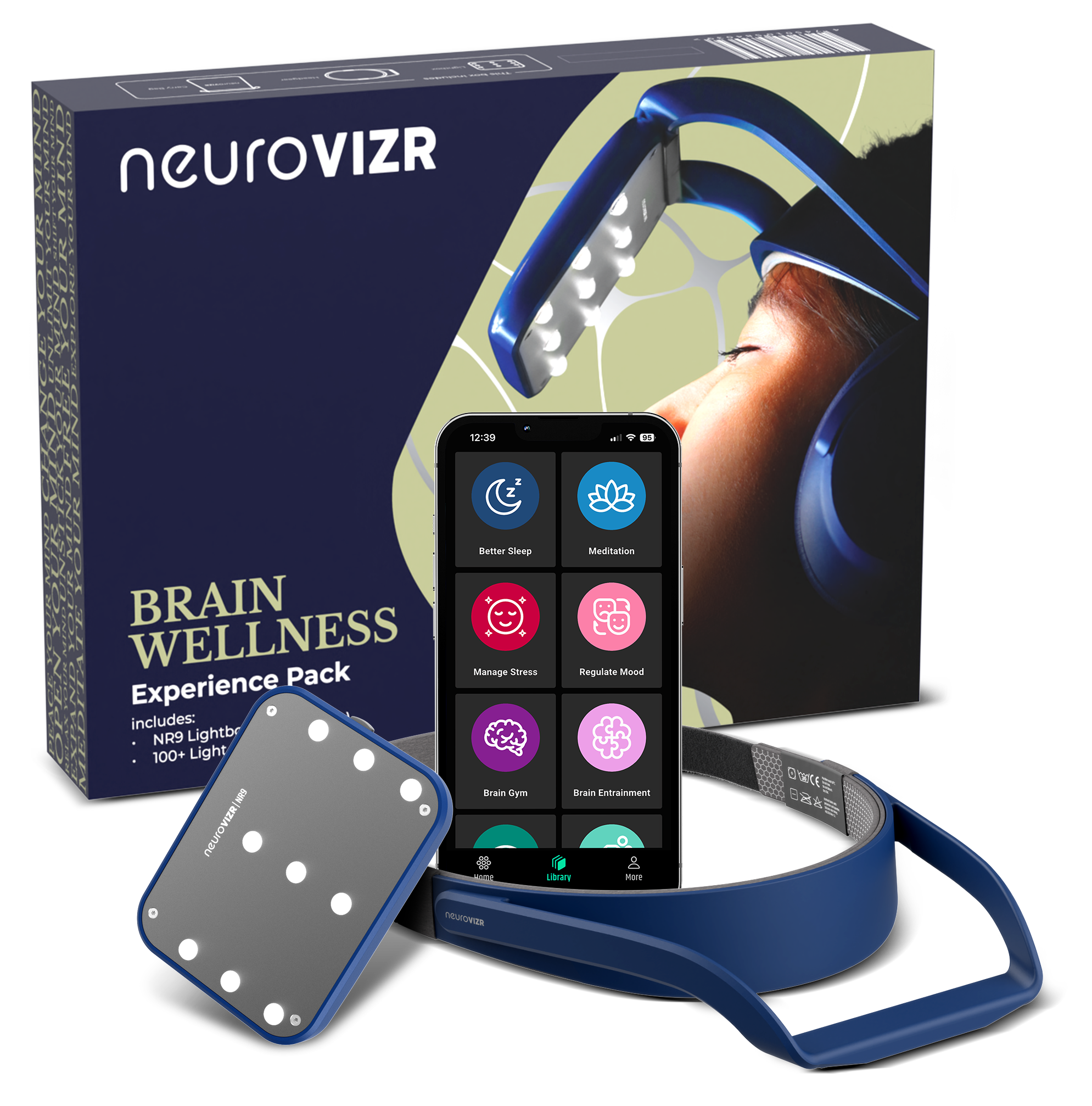







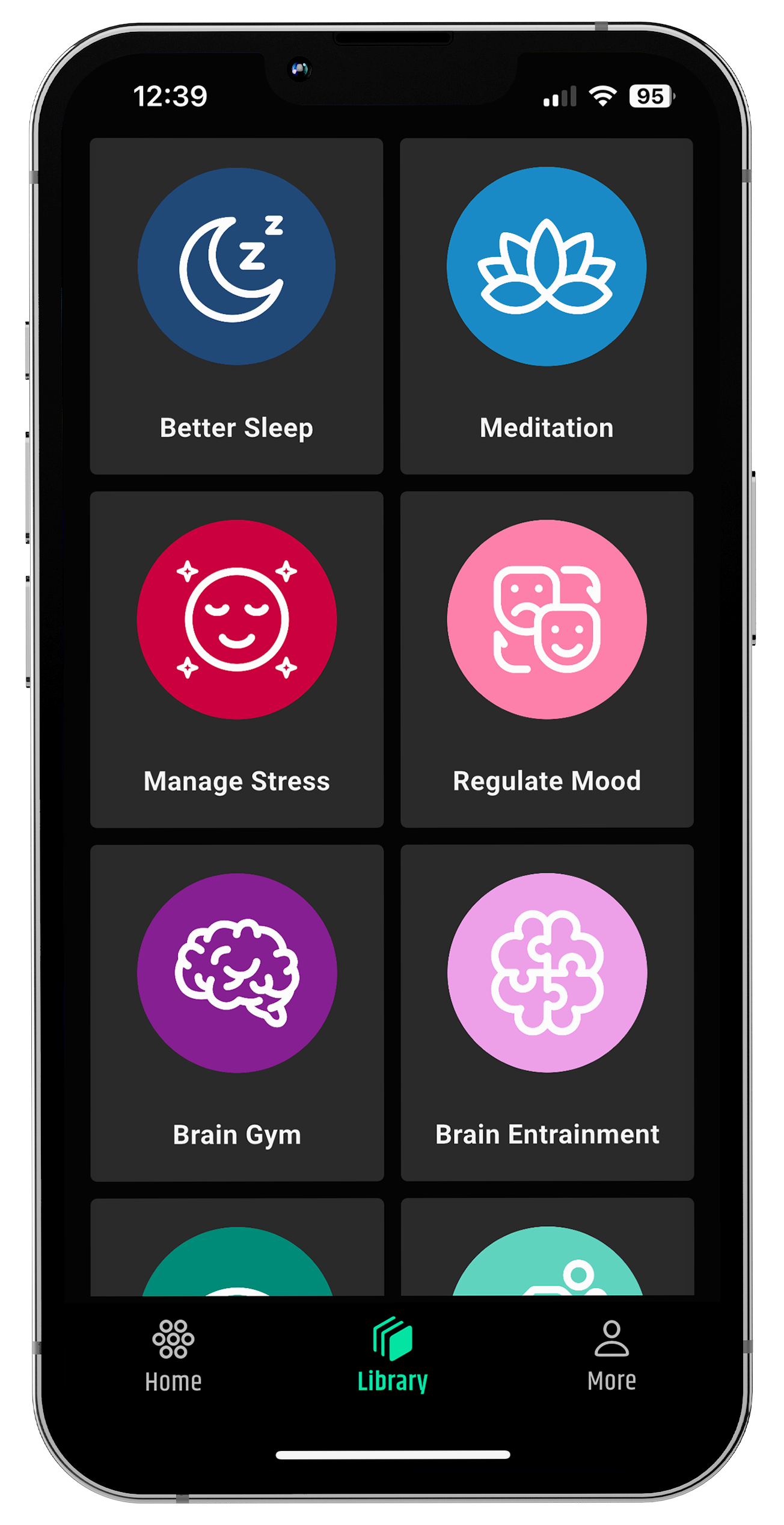
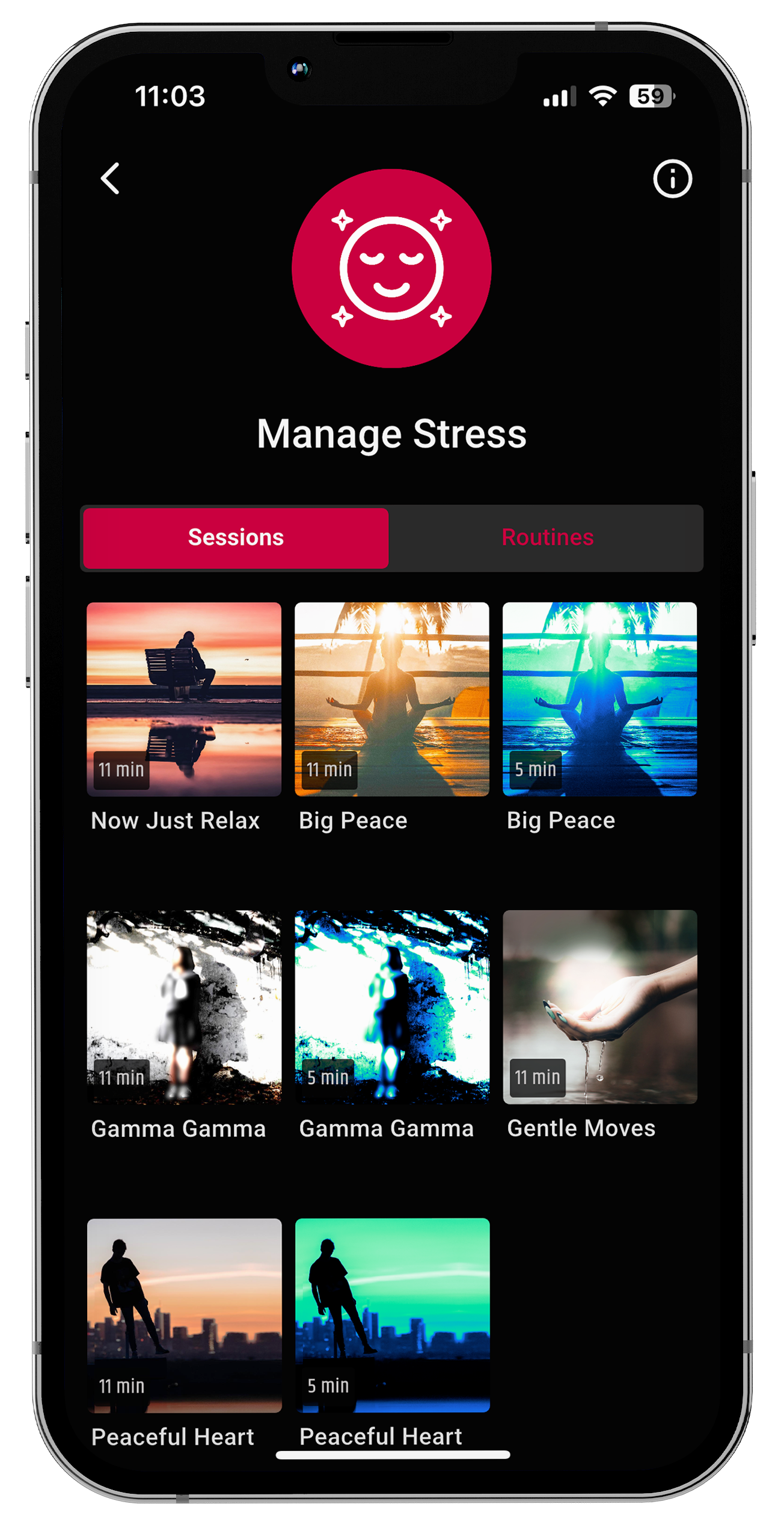
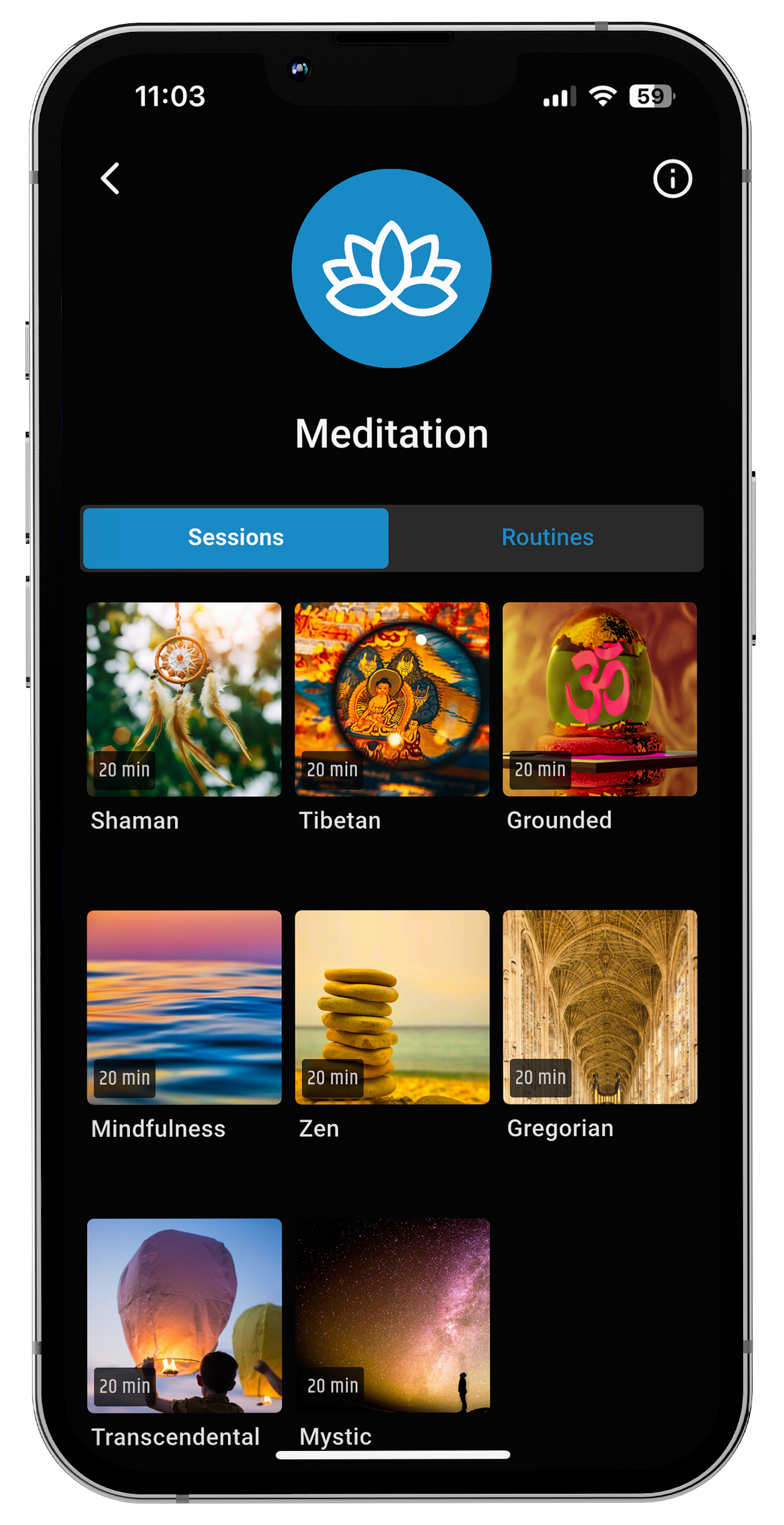

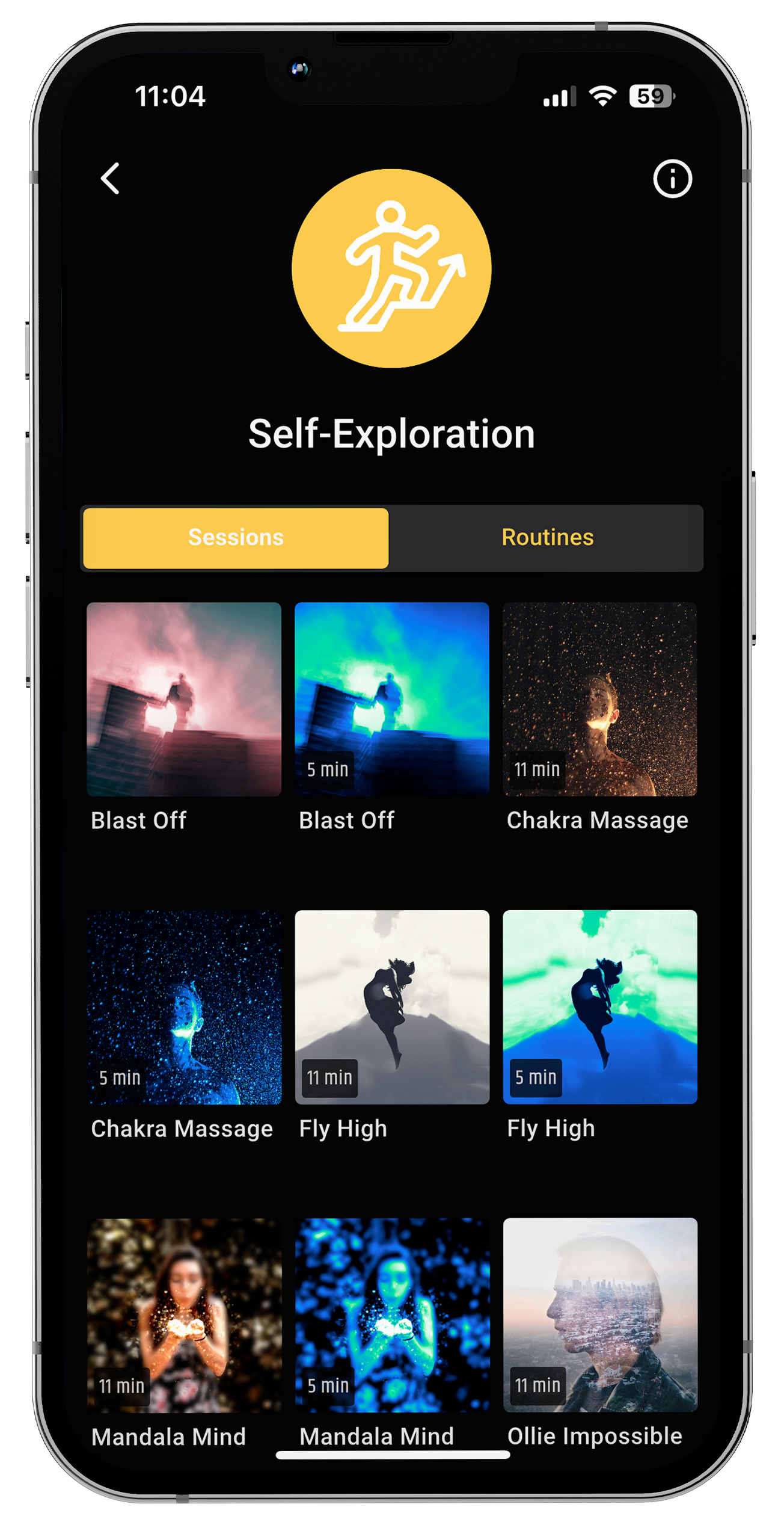
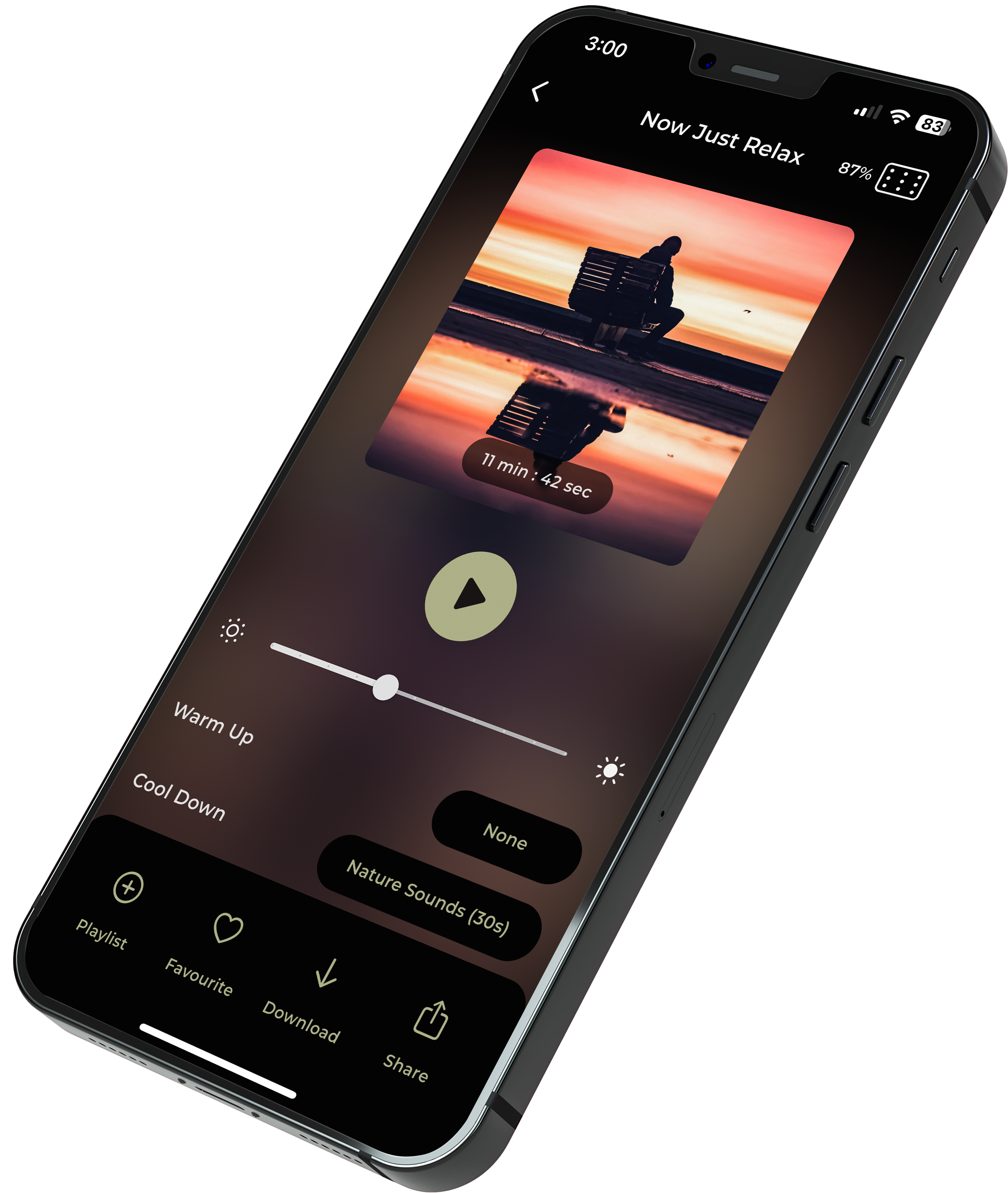








Share:
12 Types of Meditation & How Light and Sound Enhance Them
10 Meditation Hand Positions and Their Benefits